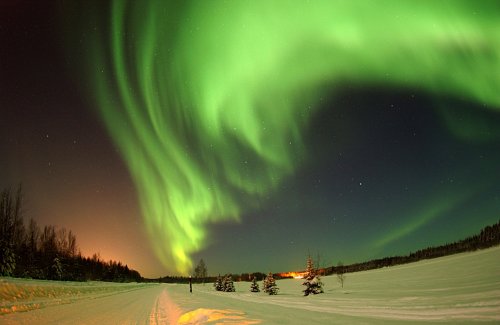According to solar scientists, Sun’s 11-year-long cycle peaked last year, declining slowly. Today’s event though, reminds us how powerful and unpredictable Sun really is. Wednesday afternoon’s powerful flare peaked at 1:48 p.m. EST, and NASA’s Solar Dynamics Observatory caught the entire explosion, which covered an area larger than Earth several times fold.
The X-Class flare event – the most powerful – initiated a wave of X-rays and other particles that reached Earth only eight minutes later. On the Sun, bright regions were visible thirty minutes later with decreased intensity, but still the brightest as ever witnessed by solar expert Jay Pasachoff: "the brightest H-alpha flare I have ever seen (in contrast with the rest of the solar disk”
Auroras are expected to form as the front passes the space, leaving the Earth behind. The wave should reach Earth Friday morning, and scientists forecast moderate G2 geomagnetic storm on Friday, followed by G3 level storms during the weekend. Locations north of the 45 degree parallel might see the auroras.
Aurora Borealis likely this evening



